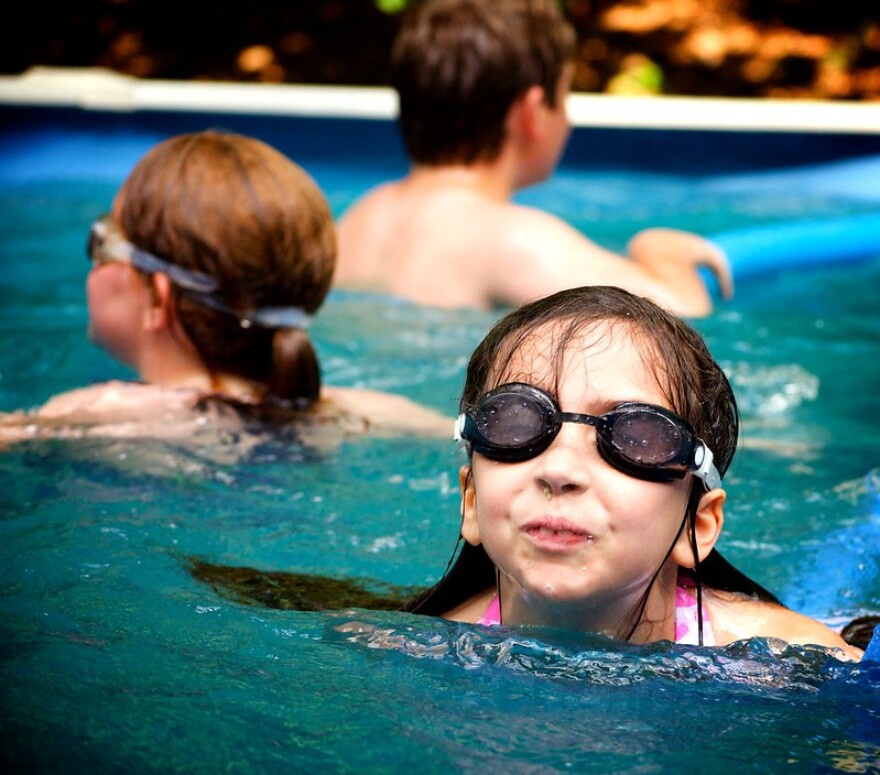GRAND RAPIDS — Recreating on lakes and rivers is a staple of Minnesota summers, but waterborne diseases can pose a risk in some areas.
Trishia Robinson, the epidemiologist supervisor of the Minnesota Department of Health’s waterborne diseases unit, joined Heidi Holtan and Kari Hedlund on the KAXE Morning Show to discuss aquatic pathogens and how we can avoid getting sick while enjoying our lakes and rivers.
The most common aquatic pathogens include E. coli, cryptosporidium, Giardia, harmful algal blooms, and (very rarely) Naegleria fowleri, a parasitic amoeba. While harmful algal blooms are visible, making the water look like pea soup or spilled green paint, the others can occur in what appears to be pristine water.
Poopy posteriors produce pathogens
A common misconception is disease-causing pathogens are caused by animals or naturally occurring sources. In many cases, however, these pathogens — particularly those causing diarrhea — are brought into water bodies by humans. Simple precautions, such as showering before entering the water and waiting three days after getting diarrhea to go swimming, can keep everyone healthy.
“I think people think there often has to be, you know, somebody pooping in the water for those germs to get into the water. That, unfortunately, is not true,” Robinson said. “We all have this small amount of fecal material on our bottom at any given time. It’s gross to think about, but that’s the reality of things.
“And especially if somebody’s sick, they have more of that and more of those germs that are, you know, going to wash off into the water. So, showering before we go into the water is really important.”
-
 Friend or foe? Water plants and woody debris in shallow water with Greg Sass
Friend or foe? Water plants and woody debris in shallow water with Greg Sass -
-
Showering after swimming is also a good idea. It helps prevent swimmer’s itch as well as further reduces the risk of other waterborne illnesses.
Jimmy, stop spitting water at your brother

A favorite childhood game is becoming a “human fountain” by getting a mouthful of water and spitting it out, often at a sibling or friend. However, this is an efficient way to introduce germs that will produce a less-enjoyable fountain at your other end. When possible, discourage activities and games that cause water to enter the mouth and nose.
Other common ways water gets into people’s mouths and noses include swimming and drinking beverages. If swimming, wear a nose clip, and don’t use the water as a makeshift refrigerator for your beverages.
Naegleria fowleri, a (rare) brain-eating amoeba, is introduced to the body by water going up the nose. Warm waters and low water levels pose a particular risk. When possible, avoid these waters and stirring up the sediment when possible. No mud fights!
What to do
If you believe you have contracted a waterborne illness, Robinson recommended contacting your health care provider and reporting the illness to the state health department hotline. It is available 24/7 online and by phone, 8 a.m.-4:30 p.m., Monday through Friday. You can also email health.foodill@state.mn.us.
The final word
Despite a career working in waterborne illness, Robinson still enjoys recreating in Minnesota’s lakes and rivers.
“I love to swim, and again, I take precautions when necessary, but I think swimming is a really healthy lifelong activity that we can enjoy,” Robinson said.
Robinson was July’s featured presenter for Itasca Waters’ Practical Water Wisdom series.
View her presentation or register for upcoming sessions at itascawaters.org.







